Is it necessary to soak the treated cucumber seeds before planting and is it possible
When pretreating cucumber seeds before planting, you can use various solutions. The procedure is effective and in some cases necessary. Processing provides good, strong shoots and a rich, tasty harvest, even when exposed to unfavorable factors.
Content
- 1 Choosing seeds correctly
- 2 Seed storage
- 3 Cooking seeds
- 4 Selection of the best specimens
- 5 Is seed treatment necessary before planting?
- 6 Preheating
- 7 Disinfection and disinfection
- 8 Thermal methods
- 9 Chemical methods, etching
- 10 How to soak seeds?
- 11 Harm or benefit?
- 12 Can treated cucumber seeds be soaked before planting?
- 13 Soaking time
- 14 Process features
- 15 Germination
- 16 Improving plant immunity
- 17 Planting seedlings
Choosing seeds correctly
To harvest a good harvest of cucumbers, you need to choose the right seeds:
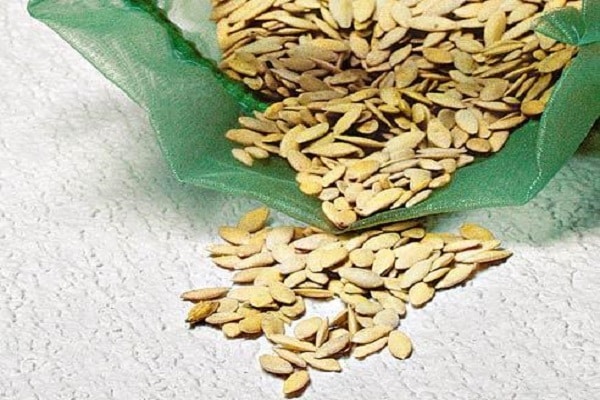
- First of all, it is necessary to consider where the crop is supposed to be grown, in the open field or in a greenhouse. For a greenhouse, it is better to choose parthenocarpic varieties (do not require pollination). For open beds, bee-pollinated varieties are chosen.
- It is necessary to decide whether hybrid or varietal cucumbers will be grown.
- It is imperative to get acquainted with the characteristics of the selected variety. At what time does it ripen, yield, shade tolerance, drought resistance, the level of resistance to diseases and pests, taste.
On the packaging of seeds, you need to pay attention not only to the picture, but also to the description. Basic information about the variety, planting dates, appointment should be placed. You cannot buy seedlings with an expired date.

Seed storage
When choosing seeds, you need to look at their age. If fresh grains are planted, many barren flowers will appear. For planting, seeds are chosen 2-3 years ago. Moreover, storage conditions play an important role in the quality of the future harvest.
Dried seedlings are best stored in paper bags, cloth bags. You need to stick a label on the package with the name of the variety and the date of collection. The package with the possessed is placed in a dry, dark place. It must be stored at a temperature of 15–20 degrees.
The seeds are glued to paper tapes with a special adhesive at some distance from each other. The grains are glued a couple of months before sowing, after which the tape is rolled into a roll and left in a cool, dark place.

Cooking seeds
Before sowing, cucumber seeds must be sorted by hand. The selected seed material is disinfected, treated with preparations that stimulate growth, hardened and germinated.
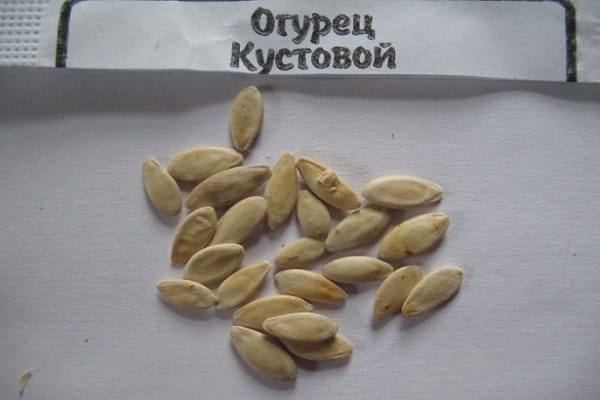
Selection of the best specimens
Only dense, evenly colored, undamaged seeds are suitable for sowing. If there are a lot of them, then sorting can be carried out using a saline solution (50 g of salt is dissolved in a liter of water). The planting material is immersed in water with salt for 10 minutes, stirring occasionally.
For planting, leave only those seeds that remain at the bottom. Empty, damaged seedlings remain on the surface. They need to be thrown away. The remaining grains are washed and dried.
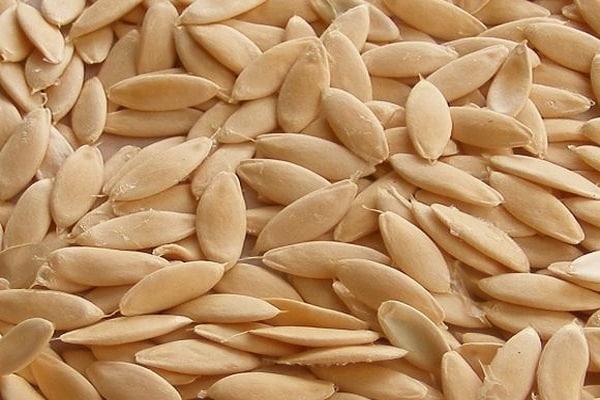
Is seed treatment necessary before planting?
If the product is purchased from a well-known company, then the treatment of cucumber seeds before sowing may not be carried out. But most experienced agronomists do not bypass this preparatory stage.
- Soaking ensures the germination of most of the planted seeds and accelerates germination. But this procedure will be useless if the weather is good outside, the grains will sprout by themselves.
- When roots appear during soaking, the risk of damage increases, in addition, seedlings become susceptible to cold and high humidity.
- It is necessary to disinfect the planting material, since pathogens can be found on the surface of the peel.
- There is no need to process hybrid seeds, as they are already being treated with fungicides and other drugs.
Presowing treatment can include several points, so you can independently decide which one should be done and which one will not be needed.
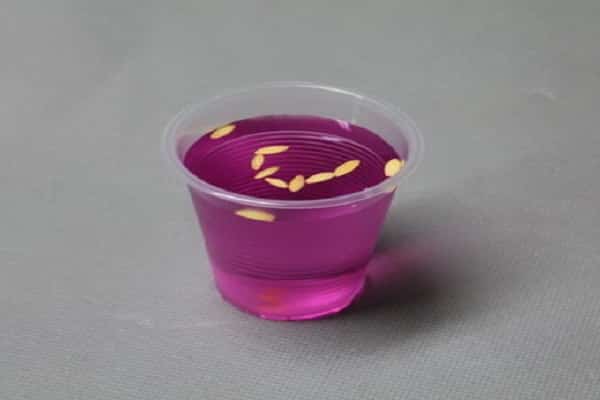
Hybrid seeds
Hybrid seeds are obtained by crossing different varieties of plants to obtain the best characteristics. It is easier to care for hybrid cucumbers, they are more resistant to adverse factors and diseases. But their grains are not recommended for planting next year, since the bushes grow weak, the yield is reduced, and the fruits are formed with low taste.
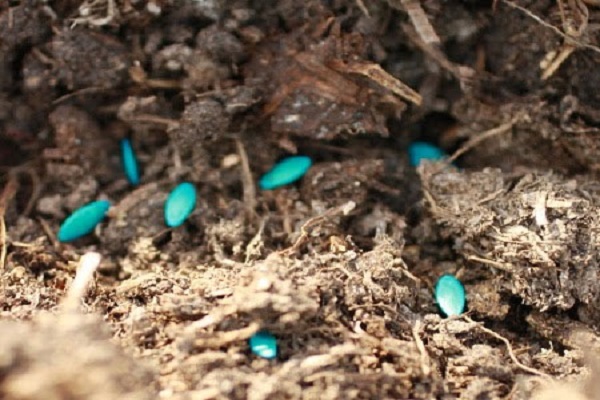
Varietal seeds
Varietal seeds are obtained by crossing plants of the same species. Such cucumbers require careful care, they are less resistant to disease, heat, cold, but their grains can be used as planting material for the next year.
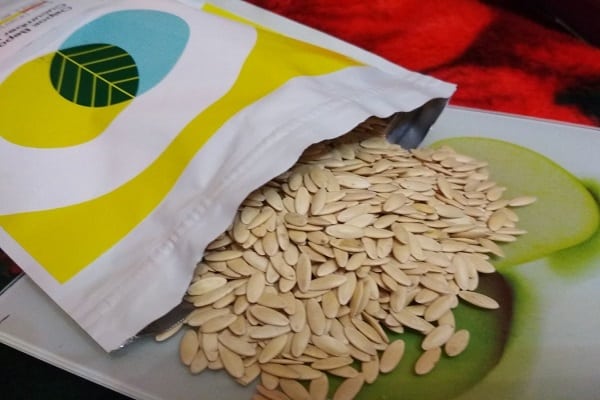
Inlaid Seeds
The inlaid seeds are covered with a special shell that dissolves easily in water. The color of the outer shell may vary. The shell contains components that protect against various infections and pests, stimulate plant growth, and also contain a large amount of trace elements.
The seed size does not change during processing. It is imperative to sow them in a well-moistened soil. And in the future, frequent and abundant watering is required. It is impossible to soak such grains before sowing, otherwise the protective shell will instantly dissolve and there will be no benefit.
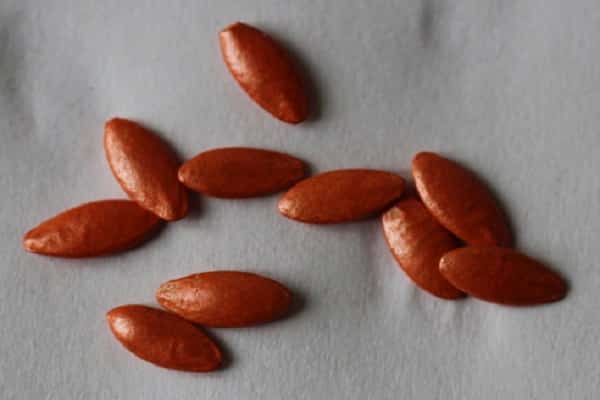
Dragee seeds
Pelleted planting material differs from ordinary seeds in that the surface is covered with a protective, nutritious film. It contains components that stimulate plant growth, as well as fertilizers.
The pelleted grains are large and therefore easier to plant. A distinctive feature of care is frequent and abundant watering. Moisture is necessary for the protective shell to soak and dissolve. If the soil is dry, the seeds will not germinate.
Seedlings appear together, the growth of cucumber lashes is active, juicy, sweet fruits ripen at the end of the growing season.
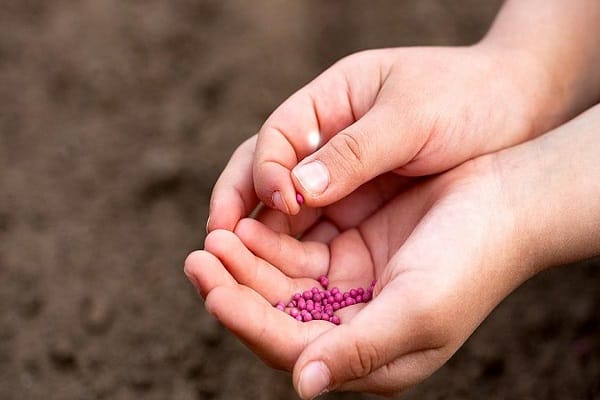
Preheating
When preparing the planting material, heating is carried out. The procedure significantly accelerates germination, activates plant growth, reduces the appearance of barren flowers and accelerates the ripening of fruits.
Warming up is carried out within a month at a temperature of +24 degrees.You can place the seedlings in a cloth bag and hang them near the heaters. You can carry out wet heating when the seeds are flooded with hot water (+48 degrees) for 25 minutes.
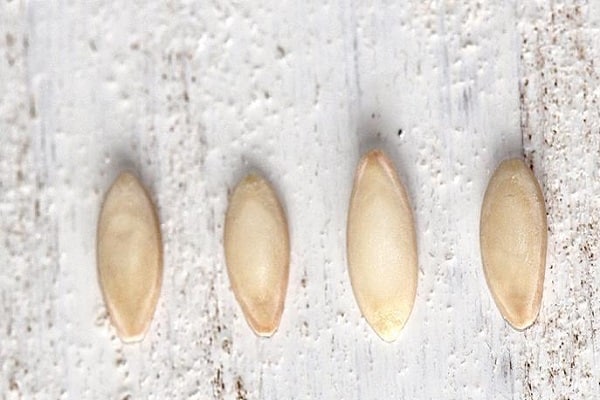
Disinfection and disinfection
During seed calibration, not only empty but also diseased seeds are selected. As a prevention of diseases and pests, the rest of the grains must be disinfected. A large number of harmful microorganisms remain on the surface of the grains, which will damage young seedlings.
Processing planting material from diseases can be carried out in two ways. A simple option is to warm the seedlings in direct sunlight for a week. The sun stimulates development and destroys pathogenic microorganisms. Indoors, you can use an ultraviolet lamp. For wet processing, solutions are used based on potassium permanganate, hydrogen peroxide, acetic or boric acid, and copper sulfate.
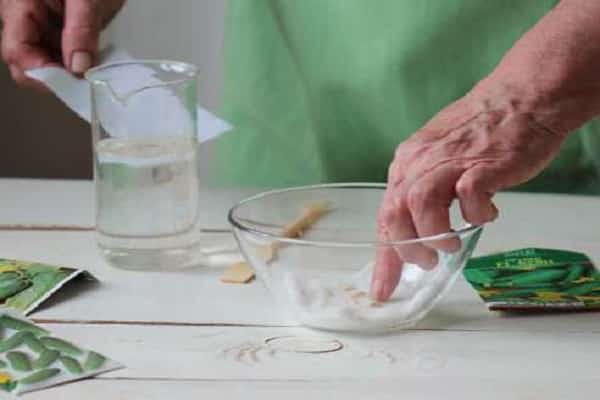
Thermal methods
Before planting in open ground, seedlings of cucumbers are recommended to be warmed up at a temperature of +58 degrees for 2.5 hours. You can warm up on the stove, in the oven, near heating appliances. If the air temperature is below +52 degrees, then the heating time increases.
Warming up at high air temperatures before planting in the greenhouse allows you to destroy the pathogens of the virus that may persist inside.
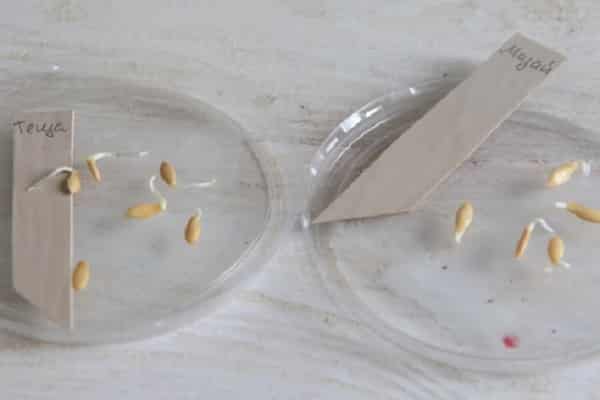
Chemical methods, etching
There is another way how to process cucumber seeds before planting - a simple pickling. The protective film covers the entire surface of the grains and increases the weight by 2%.
Fungicides such as Premix, Vincit, Dividend, Raxil are used for etching the planting material. The active components of drugs produced in the form of liquid and powder are capable of killing pathogens of many diseases.
For cucumbers, the seeds are small and vegetable growers recommend choosing less poisonous preparations. In the process of etching, it is important not so much to destroy pathogens on the surface of the grains, but to form a stable immunity.
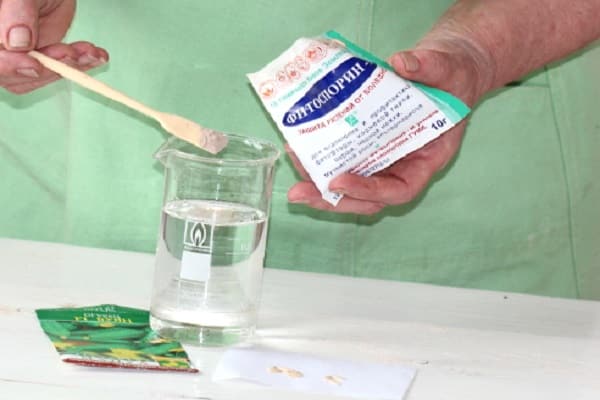
How to soak seeds?
Whether or not the seeds need to be soaked depends on the pre-treatment they have gone through. If during the preparation process a nutritious, protective film is created, then soaking is not carried out.
The procedure will require cucumber seeds, water (melt water or spring water is ideal), gauze cloth, and a plate. Selected seedlings are spread on a damp cloth surface and covered with another layer of wet gauze on top, then poured with hot water (+33 degrees).
If the water becomes dark during soaking, then it must be changed periodically until the color becomes transparent. The container is moved to a dark place where the air temperature is +23 degrees.

Harm or benefit?
When preparing seeds for planting, many vegetable growers have a question, do they need to be soaked?
If the cucumber grains are of good quality, then the soaking procedure is not needed. In good, warm weather, they begin to germinate after three days. In this case, soaking will only harm the processed grains, as the protective film is washed off the surface.
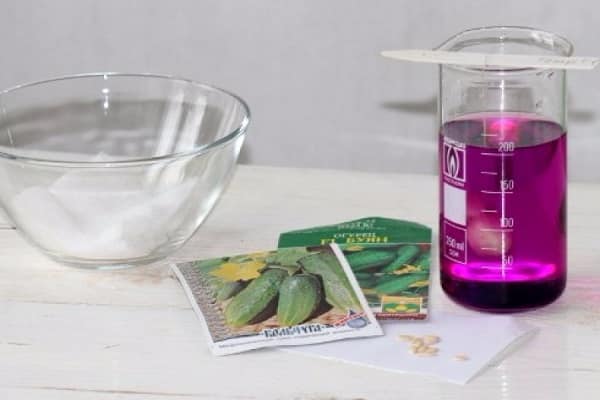
If the soaked planting material sprouts more than 5 mm, then this will largely reduce the resistance to adverse environmental conditions. Cold snap or torrential rains can kill.
Soaking is useful for seeds with insufficient moisture inside due to non-compliance with storage rules or for seeds that are supposed to be sown for seedlings. In these cases, soaking will be beneficial: the growth and development of vegetable crops will accelerate, and disease resistance will increase.
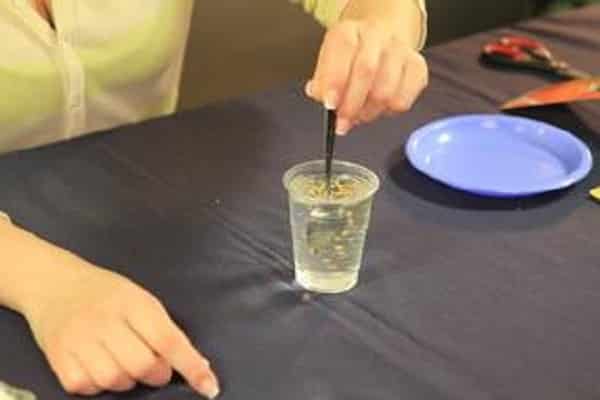
Can treated cucumber seeds be soaked before planting?
Experienced gardeners do not recommend processing cucumber seeds before planting, which have been pickled. When soaking, water removes the protective film from the grains.
It is recommended to soak only those seeds that have been disinfected in potassium permanganate or hydrogen peroxide. Before soaking, it is recommended to keep the seedlings in growth stimulants.
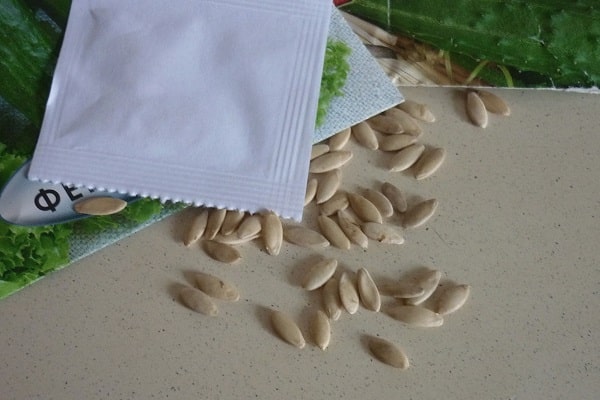
Soaking time
Soaking time depends on how the cucumber seeds are processed before planting. In some solutions it is necessary to hold it for 24 hours, in others it is enough to hold it for 4–5 hours.
On average, the soaking procedure lasts three days.
If it is supposed to grow cucumbers in a greenhouse, then soaking is carried out in early May. Planting seeds in open ground should be postponed until the end of May, when the threat of frost has subsided and the soil warms up well enough. Soaking is carried out three days before sowing.
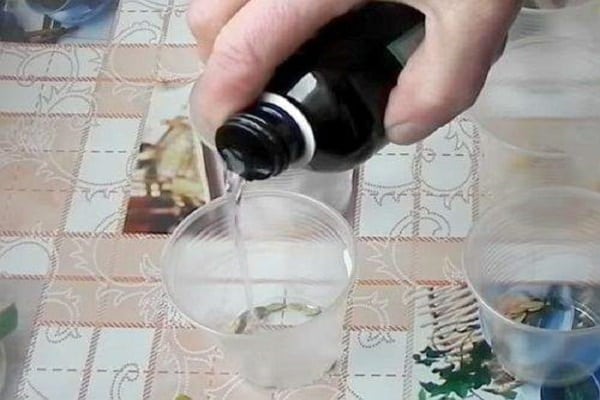
Saline solution
The liquid with salt allows you to determine which seeds are suitable for planting. There is nothing difficult how to properly prepare the liquid. Dissolve 8 g of table salt in a glass of warm water. The planting material is poured with the finished solution.
After 8-10 minutes, the seedlings that have surfaced are removed, and the remaining seed is washed and dried at a temperature of +21 degrees.

Soda solutions
Before sowing, it is useful to treat the grains with a soda solution. Soda-based solutions can have antimicrobial effect and prolong the fruiting period. To prepare the composition, you will need to dissolve 5 g of baking soda in a liter of water. Seeds with such a composition are poured for a day. In addition, thanks to the soda composition, the top layer of the grains softens, and moisture penetrates inside without obstacles.
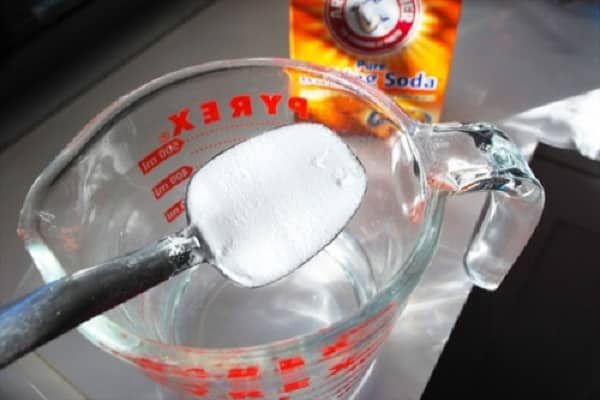
Biologically active drugs
It is useful and effective to soak the seed in biologics such as Zircon, Epin, Ivin, Potassium or sodium humate.
All drugs are aimed at stimulating growth, increasing resistance to infections and adverse external conditions.
Zircon stimulates the germination of seedlings and strengthens the immune system. The working solution based on Zircon is prepared at the rate of 3 drops of the drug per 320 ml of water. The grains are kept in solution up to 17 hours. During this time, the first shoots hatch.
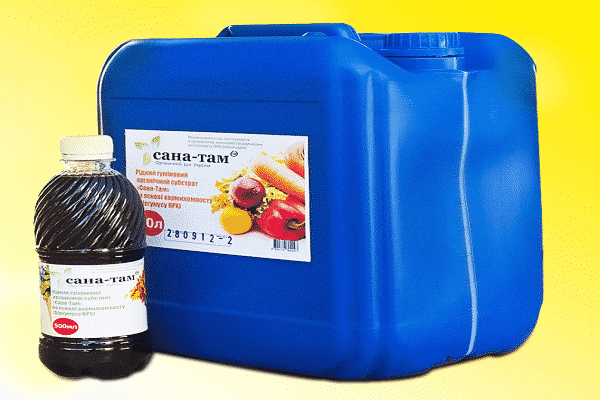
In ash
At home, you can prepare an ash solution to soak seedlings. Ash contains many micronutrients that contribute to better plant growth.
To soak the seeds in the solution, an infusion is made first. In a liter of boiled water, 60 g of wood ash is insisted for two days. Then the grains are kept in the finished infusion for 6–7 hours.
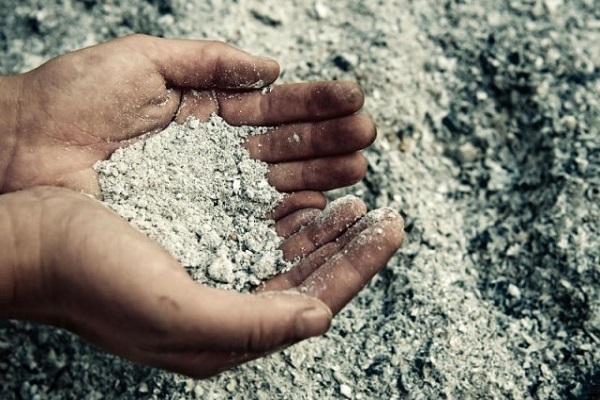
Aloe juice
Aloe juice is able not only to activate plant growth, but also to strengthen the immune system. Juiced young shoots rarely get sick and are not attacked by pests.
The solution is prepared from the juice of the lower, fleshy leaves of aloe. Pre-cut leaves are wrapped in paper and placed in the refrigerator for 12-14 days. During this time, the maximum amount of useful components will accumulate in the juice.
After two weeks, juice is squeezed out of the leaves of the plant and diluted with water. Seed material is immersed in the finished solution for a day.
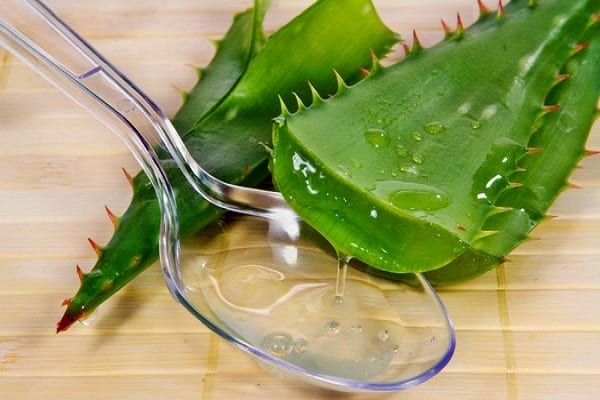
Manganese solution
To disinfect the surface of seeds, a solution of potassium permanganate is often used. To prepare a 1% solution, you will need to dissolve 3 g of potassium permanganate in 250 ml of water. The water should turn a bright purple color. A weak solution will not fight infection.
Prepared seedlings are dipped in a solution for 25 minutes, after which they are washed with water. Manganese solution protects against infections that are located on the surface of the grains. The effectiveness of the procedure is reduced if the seeds stick to each other.
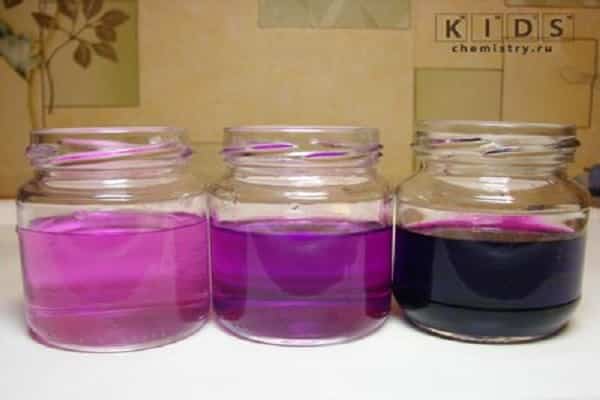
Extracts from young seedlings
Soaking of cucumber grains in extracts of young seedlings of any grain crops is effective. The seeds of the selected grain crop are crushed to a powdery state, poured with water and left to infuse for a day. The prepared solution is filtered and the seedlings prepared for planting are poured.
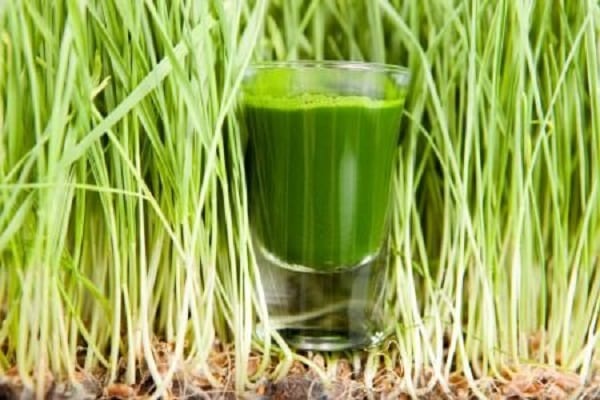
Epin
The active components of the Epin preparation contribute to the rapid germination of seeds, increase resistance to diseases and pests, and allow them to tolerate a humid environment due to rains or flooding of the site.
To prepare an effective composition, it is necessary to dissolve two drops of the drug in 90 ml of water. The seedlings are kept in a biostimulator for 19 hours. The room temperature should be +22 degrees.
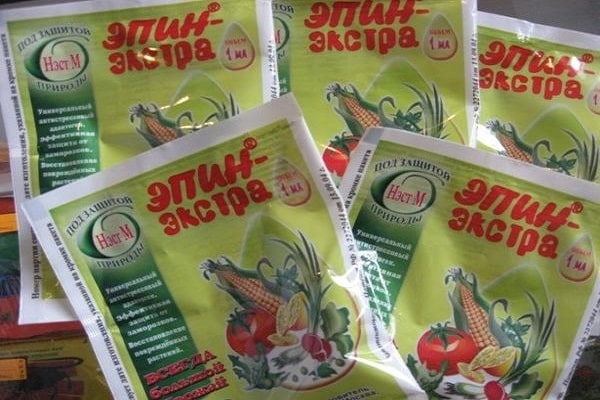
Process features
For soaking, ideally prepare melt water, the water temperature should be +26 degrees. The fabric containing the seeds should not dry out. It is recommended to carry out the disinfection procedure before soaking.
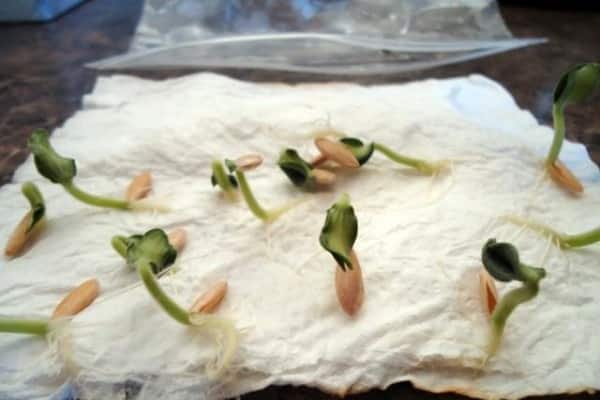
Germination
If there are doubts about the germination of seeds, then it is better to germinate them first. The disadvantage of this procedure is that such seedlings need to be looked after especially carefully. They are often watered and protected from the cold. In addition, if the seeds are planted too deeply or their shell dries out, the sprouts will not be able to get rid of the seed coat on their own.
The most popular way to germinate seedlings outdoors is using toilet paper. Toilet paper is folded in several layers, laid on polyethylene strips and moistened with water using a spray bottle. Cucumber seeds are placed on wet paper at a distance of 4 cm from each other. Then they are rolled up and placed in a glass of water.

There are other ways to grow seeds at home for planting outdoors. The kernels can be placed in a damp cotton strip of cloth and wrapped in a plastic bag.
You can germinate seeds in sawdust. A small container is filled with sawdust, spilled with hot water. After cooling, the seedlings are laid out, lightly sprinkled with sawdust on top and compacted. The container is covered with a plastic bag. Sprouted grains can be easily removed or left to grow cucumber seedlings.

Improving plant immunity
There are many ways to increase the resistance of cucumber bushes to viral, bacterial and fungal infections.
Treatment with growth stimulants
Seed treatment with growth stimulants is carried out not only to enhance plant development, but also to improve immunity and increase the resistance of the planting material to adverse environmental factors. The grains are soaked for an hour in preparations such as Epin, Zircon, Germination, Amulet. These funds are safe for humans and plants, but the dosage must be observed while preparing the solution.
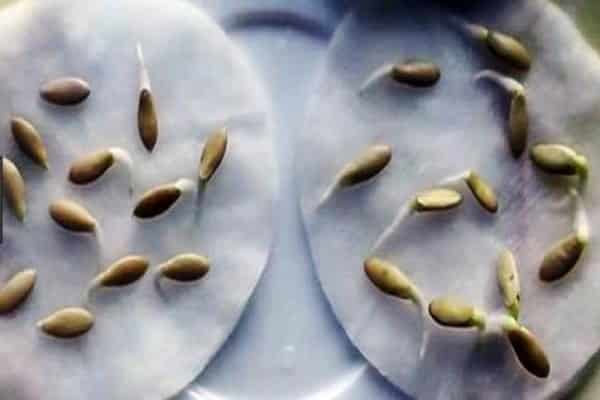
Hardening or stratification
Hardening helps plants to better tolerate temperature changes and develops resistance to other adverse environmental factors. Seeds that have gone through the hardening procedure feel better in cold soil, rarely get sick with rot.
The beans are wrapped in a damp cloth and refrigerated for two days. The best storage place is the refrigerator door, where the temperature is +3 degrees. After hardening, the grains can be processed in nutrient formulations and start planting.
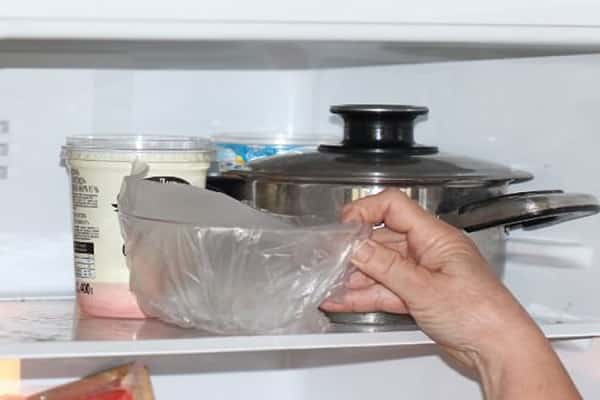
Sparging - oxygen treatment
Bubbling is carried out to saturate the planting material with oxygen. It is advisable to carry out the procedure with cucumber grains, which are more than 5 years old. Sparging activates energy and promotes better growth.
The seeds are folded into a cloth bag and placed in a jar of warm water. Thereafter, air is supplied using an aquarium compressor. The compressor tube is placed close to the bag so that air bubbles evenly surround its contents.The procedure lasts for 24 hours.
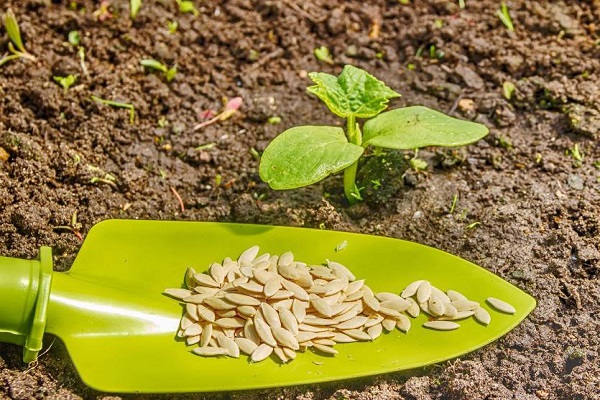
Planting seedlings
In order for young bushes of seedlings to feel good in a new place, you need to transplant correctly. If the planting material was processed correctly, and the seedlings were watered on time and correctly, fertilized and other important care points were carried out, then adaptation will be quick and easy.
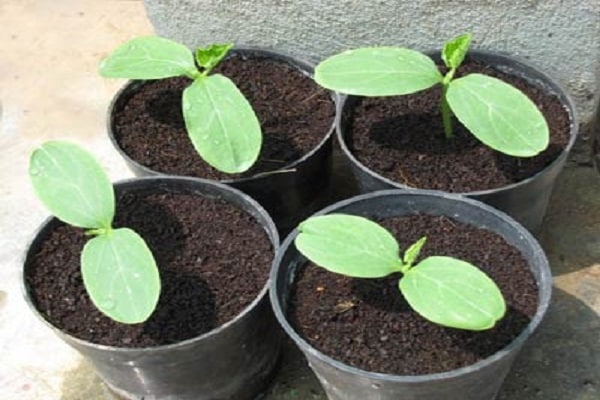
To the greenhouse
The seedlings are ready for transplanting into the greenhouse when two pairs of true leaves unfold on the stem and two antennae appear. If the greenhouse is not heated, then you need to wait for the air temperature to be +23 degrees during the day, and at least +16 at night. In this case, the soil should warm up to +15 degrees. This time approximately coincides with the first days of May, the seedlings are planted a month before transplanting.
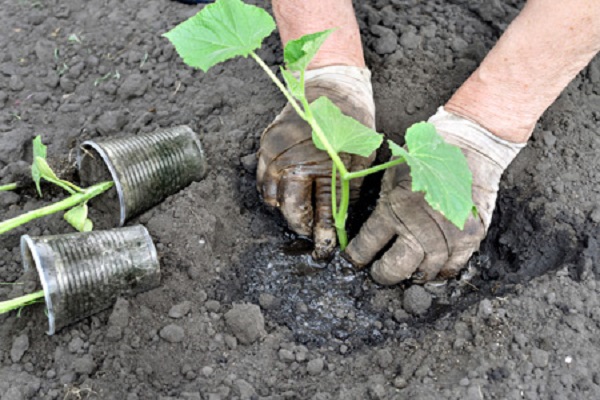
In open ground
Seedlings of cucumbers in open ground can be planted when the ground warms up to +13 degrees. The site intended for planting is pre-dug up, loosened and fertilized. Cucumbers love light, loose soil.
With increased acidity, wood ash is added to the soil. Two weeks before transplanting, ammonium nitrate, superphosphate and potassium sulfate are added to the soil.
The distance between the shoots in the bed should be 13 cm. Humus or compost is laid out at the bottom of the hole. After that, a sprout is planted along with an earthen clod. It is good if the seedlings were grown in separate peat pots. In this case, the sprout together with the glass is visited into the hole. Then it is poured abundantly with water and sprinkled with earth.



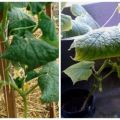
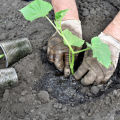

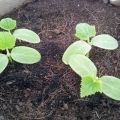
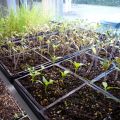
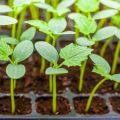
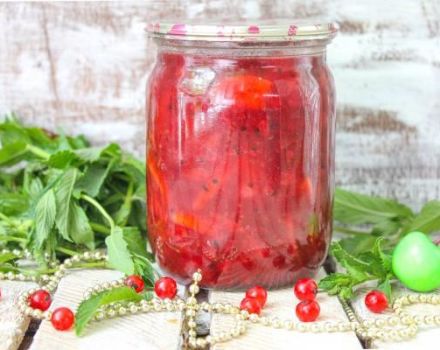
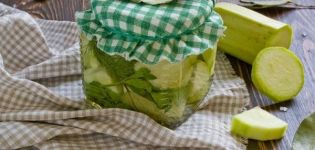
Cucumbers must be prepared for planting both in open ground and in a greenhouse. After they germinate, use the bioactivator "BioGrow”, It will allow the seedlings to become much stronger.